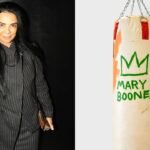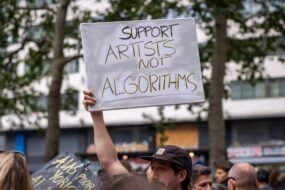

Fiona Apple at the Palladium in Los Angeles in 2012 on the Idler Wheel… tour. Photo: Caterpillar84, Wikimedia Commons, CC BY-SA 4.0
The global music industry, while outwardly glamorous, is structurally imbalanced. The ones who suffer most are those who create its core product, namely musicians and composers. In the age of streaming, platforms like Spotify have redefined how we consume music, yet they’ve simultaneously exacerbated longstanding inequities in how money flows. Artists, especially those without major label backing, now navigate a system that offers exposure over compensation, while tech platforms and major labels dominate profits.
Under the pro-rata streaming model used by Spotify, Apple Music, and others, revenue is pooled and then distributed based on share of total streams. This means artists aren’t paid per listener, but rather in proportion to their popularity. In effect, a few superstar acts rake in the majority of the money, while independent or niche artists are left with pennies. Spotify, for example, pays between $0.003 and $0.005 per stream. Even then, that money often goes first to rights holders, not the artists themselves.
This is echoed in Little Simz’s 2021 track “Introvert”, where she raps:
Industry killers and demon disguises
I see the hierarchies and I recognise it.
Little Simz exposes an industry that masquerades as progressive and supportive but, in truth, is riddled with inequality and exploitation. Her words point directly at the imbalance of power and profit distribution. This is especially the case for artists outside the mainstream.
A 2021 UK Parliament report by the Digital, Culture, Media and Sport Committee confirmed this. It found that artists receive on average just 13% of the revenue generated by their music, while major labels keep over half. The report concluded that the streaming model doesn’t fairly reward musicians and recommended a “complete reset” of industry practices. Yet, legislative movement has been slow. This is a reflection of the entrenched influence of major record companies.
Part of the problem lies in traditional recording contracts. Many musicians sign deals that favour the label. Advances must be recouped, costs deducted, and control ceded. This structuring has only become more opaque in the digital era. Even artists who achieve significant streams can find themselves owing money to labels, rather than receiving it.
For composers and songwriters, the picture is even worse. Streaming services typically allocate just 10–15% of revenue to publishing royalties, from which composers are paid. This means that those who write the music often earn far less than those who perform or distribute it — an ironic injustice in an industry built on songs.
Halsey touched on this in 2022 when they went public about their label withholding a single unless it had viral TikTok potential. The underlying message was that artistic creation is only valuable if it trends. In their song “Nightmare”, Halsey voices this commercial pressure:
Come on, little lady, give us a smile
No, I ain’t got nothin’ to smile about.
That lyric reflects the broader industry expectation that artists conform — not just creatively, but commercially — to earn visibility or support. And visibility itself is increasingly controlled by algorithms. On Spotify, a track’s success is often determined by whether it’s included in curated playlists or recommended by algorithms. These are systems that are notoriously opaque. Labels invest in securing these placements, giving their artists a distinct advantage over the independent musicians who must rely on organic growth.
In “This Is America”, Childish Gambino (Donald Glover) warns against being distracted by spectacle while deeper exploitation continues unchecked:
This is America
Don’t catch you slippin’ up
Look what I’m whippin’ up.
The lyric mirrors how the industry dangles viral prowess and success as bait, while the underlying financial structures strip away the artist’s control and reward.
Spotify’s own moves have further deepened this inequality. In 2020, it introduced “Discovery Mode,” which allows artists to boost track visibility. This is in exchange for a lower royalty rate. It’s a clear trade-off of visibility for income. This incentivises self-undercutting just to remain competitive. A tactic that favours the platform more than the musician.
In developing countries, musicians face similar but compounded problems. Copyright enforcement is weaker, and collection systems are often inefficient or corrupt. International deals tend to benefit multinational corporations at the expense of local artists. As streaming expands globally, these inequalities become more entrenched.
Yet some musicians are pushing back. Platforms like Bandcamp offer better revenue splits. Artists retain around 82% of sales. And many artists have turned to direct support models like Patreon or subscription platforms. However, these systems often require a large, established fanbase and don’t scale for most creators.
Singer-songwriter Fiona Apple, long an industry critic, summed up the exhaustion and disillusionment in her 2020 song “Shameika”:
I had potential
But at that potential
I was never comfortable.
That discomfort reflects the growing awareness that artistic talent alone isn’t enough to thrive in today’s music economy. One must also navigate the pressures of commercialisation, platforms, and intermediaries all extracting value along the way.
In the end, the music industry remains a paradox. It’s a multi-billion-dollar enterprise built on creativity, yet one that persistently underpays and undervalues creators. Streaming has amplified access, but not equity. As long as the system continues to reward platforms and labels above people, it will remain structurally exploitative.
Real change would mean not just fairer pay structures, but a cultural shift — one that sees artists as partners, not products. Otherwise it will all be AI pretty soon and everyone will be switching off from the grid altogether.









